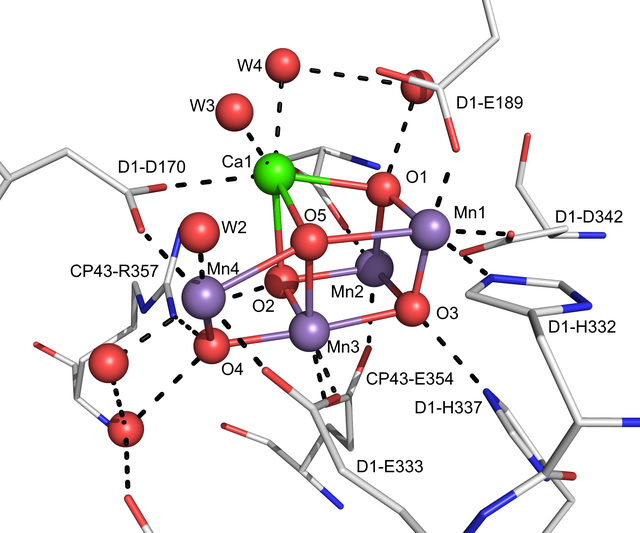Micronutrient
Essential elements required by organisms From Wikipedia, the free encyclopedia
Micronutrients are essential elements required by organisms in small quantities to perform various biogeochemical processes and regulate physiological functions of cells and organs.[1][2] By enabling these processes, micronutrients support the health of organisms throughout life.[3][4][5]
For humans, vitamins and dietary minerals are the primary micronutrients.[3][6] Human micronutrient requirements are in amounts generally less than 100 milligrams per day, whereas macronutrients are required in gram quantities daily.[7] Deficiencies in micronutrient intake commonly result in malnutrition.[3][8]

Micronutrient abundance in the environment greatly influences biogeochemical cycles at the microbial level which large ecological communities rely on to survive.[9] For example, marine primary producers are reliant upon bioavailable dissolved iron for photosynthesis.[10][11][12] Secondary and tertiary producers in oceans are therefore also reliant on the presence of sufficient dissolved iron concentrations.
Inadequate micronutrient intake in humans
Summarize
Perspective
Inadequate intake of essential nutrients predisposes humans to various chronic diseases, with some 50% of American adults having one or more preventable disease.[3] In the United States, foods poor in micronutrient content and high in food energy make up some 27% of daily calorie intake.[3] One US national survey (National Health and Nutrition Examination Survey 2003-2006) found that persons with high sugar intake consumed fewer micronutrients, especially vitamins A, C, and E, and magnesium.[3]
A 1994 report by the World Bank estimated that micronutrient malnutrition costs developing economies at least 5 percent of gross domestic product.[13] The Asian Development Bank has summarized the benefits of eliminating micronutrient deficiencies as follows:
Along with a growing understanding of the extent and impact of micronutrient malnutrition, several interventions have demonstrated the feasibility and benefits of correction and prevention. Distributing inexpensive capsules, diversifying to include more micronutrient-rich foods, or fortifying commonly consumed foods can make an enormous difference. Correcting iodine, vitamin A, and iron deficiencies can improve the population-wide intelligence quotient by 10–15 points, reduce maternal deaths by one-fourth, decrease infant and child mortality by 40 percent, and increase people's work capacity by almost half. The elimination of these deficiencies will reduce health care and education costs, improve work capacity and productivity, and accelerate equitable economic growth and national development. Improved nutrition is essential to sustain economic growth. Micronutrient deficiency elimination is as cost-effective as the best public health interventions and fortification is the most cost-effective strategy.[14]
Salt iodization
Salt iodization is a major strategy for addressing iodine deficiency, which is a major cause of mental health problems. In 1990, less than 20 percent of households in developing countries were consuming iodized salt.[15] By 1994, international partnerships had formed in a global campaign for Universal Salt Iodization. By 2008, it was estimated that 72 percent of households in developing countries were consuming iodized salt,[16] and the number of countries in which iodine deficiency disorders were a public health concern reduced by more than half from 110 to 47 countries.[15]
Vitamin A supplementation
Vitamin A deficiency is a major factor in causing blindness worldwide, particularly among children.[17] Global vitamin A supplementation efforts have targeted 103 priority countries. In 1999, 16 percent of children in these countries received two annual doses of vitamin A. By 2007, the rate increased to 62 percent.[18]
Fortification of staple foods with vitamin A has uncertain benefits on reducing the risk of subclinical vitamin A deficiency.[19]
Zinc
Fortification of staple foods may improve serum zinc levels in the population. Other effects such as improving zinc deficiency, children's growth, cognition, work capacity of adults, or blood indicators are unknown.[20] Experiments show that soil and foliar application of zinc fertilizer can effectively reduce the phytate zinc ratio in grain. People who eat bread prepared from zinc-enriched wheat show a significant increase in serum zinc, suggesting that the zinc fertilizer strategy is a promising approach to address zinc deficiencies in humans.
Plant micronutrient needs
Plants tend not to use vitamins, although minerals are required.[8][21]

Some seven trace elements are essential to plant growth, although often in trace quantities.[citation needed]
- Boron is believed to be involved in carbohydrate transport in plants; it also assists in metabolic regulation. Boron deficiency will often result in bud dieback[citation needed].
- Chloride is necessary for osmosis and ionic balance; it also plays a role in photosynthesis.
- Copper, iron, manganese, molybdenum, and zinc are cofactors essential for the functioning of many enzymes.[23] For plants, deficiency in these elements often results in inefficient production of chlorophyll, manifested in chlorosis[citation needed].
See also
References
Wikiwand - on
Seamless Wikipedia browsing. On steroids.
